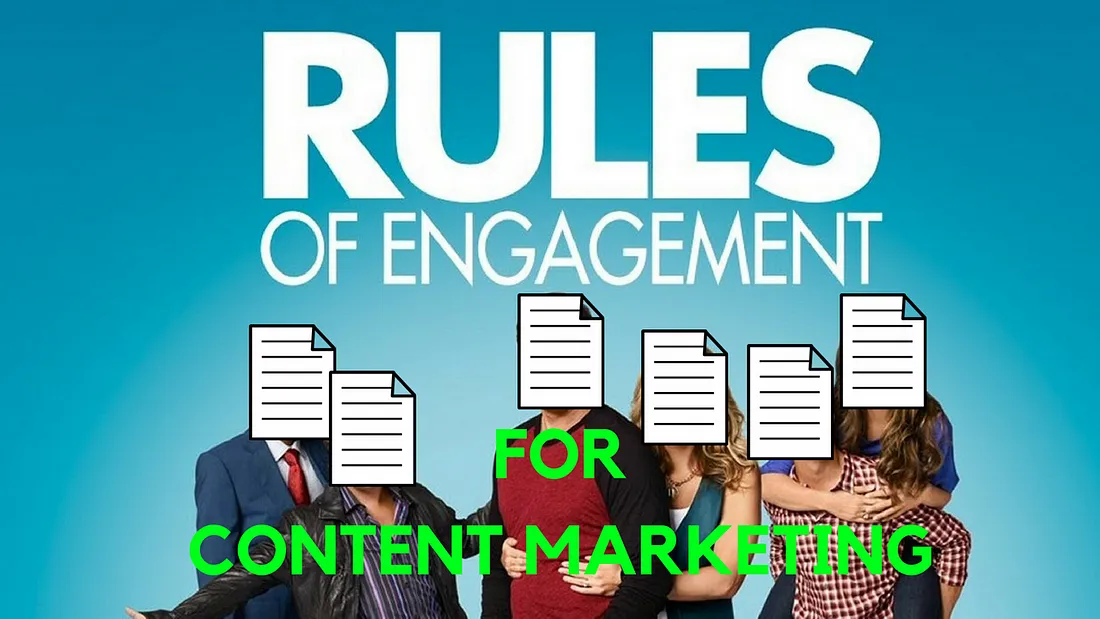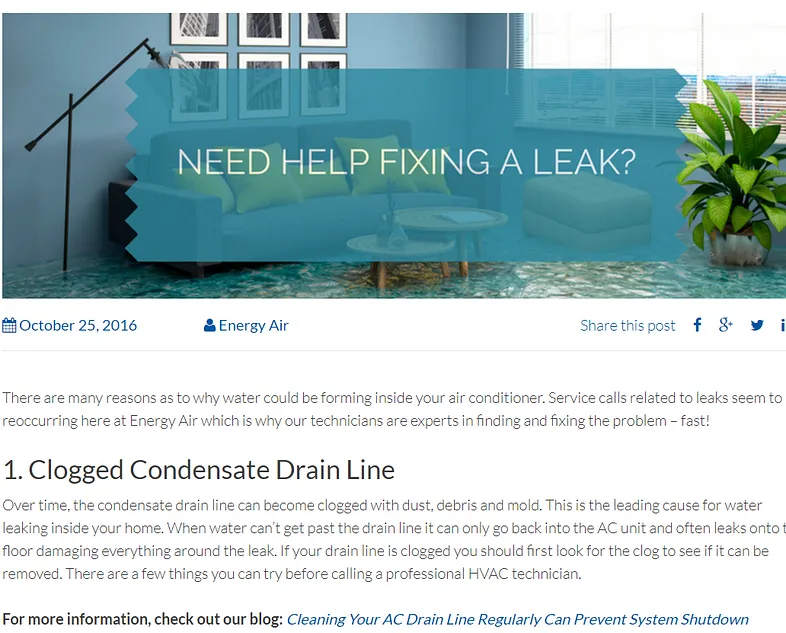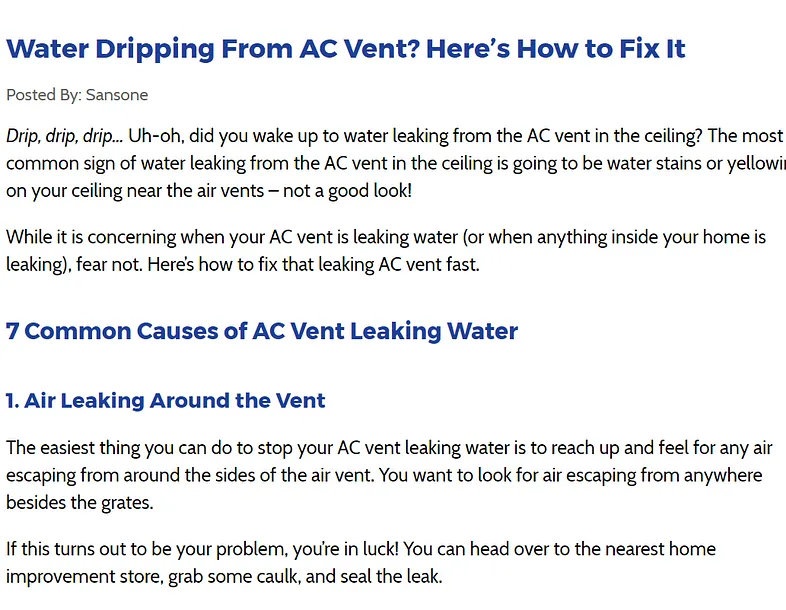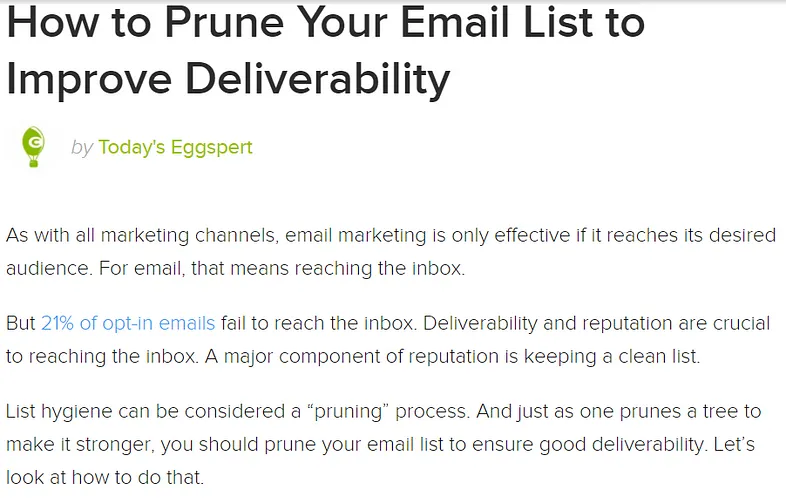
Why Your Content Marketing Doesn’t Work
Content Marketing Rules of Engagement for Startups & Entrepreneurs
Content marketing has been on trend for a while. It seems like everybody and their brother has a blog these days.
But I still see so many businesses struggling to get results from their content marketing.
Many businesses understand how to create topics that are based around their industry. Many businesses even have regularly updated blogs.
So it’s not the ideation or the frequency that most businesses have a problem with.
The problem is with your execution.
It’s easy enough to slap any old thing up on the internet weekly and call it a day. If your blog is full of 200–300 word generic articles, don’t be surprised when you don’t see any results.
Here are the rules that you should follow to execute your content marketing in a way that you will see results.
Anatomy of an Article
“Jamie, I already know what an article is…” I hear you saying.
Maybe you think you’ve already covered this in grade school. How could it possibly be useful to you now?
The reason why I wanted to discuss the basic sections of an article is so we can talk about planning your content around the sections.
Luckily, the parts of an article we’re going to use will probably be a lot simpler than what you were taught in school.
Here are the 3 need to know parts of an article:
#1 — Intro
#2 — Body
#3 — Call to Action
The reason I’m telling you this is because every single time you set out to write a piece of content, you should be outlining your article according to these 3 sections.
I’m sure that today you probably don’t outline your content at all.
Outlining your content is really important, because when you’re creating an article your goal isn’t just to “Get something out there.”
Your goal is to answer a question (or solve a problem) in the most complete way possible.
Outlining the 3 main article sections will force you to stop and think about what exactly people are going to get out of your piece of content, because you’re going to have to take the time to decide that in advance.
A lack of outlining contributes to fluff articles.
You don’t want to be fluffy.
Everybody hates reading fluff. Fluff pieces are 200–300 word “articles” that have no takeaways, don’t answer the question, and insult your intelligence with their lack of content.
Fluff articles wastes your readers time.
To avoid writing a fluff piece, try to write 3 or more main points for your “body” section. Then your introduction will be about 200 words, each point in the body section will be about 200 words, and your call to action/conclusion will be at least 200 words.
If you want to get even more advanced, detail some subpoints for your body points!
By taking the time to outline your article, or to outline the body if nothing else, you will avoid writing fluff because you’re planning from the beginning what the takeaways will be and how you will approach the problem.
Shoot for 1,000
Look, when Google is ranking search results they’re trying to connect the reader with content that answers their query.
It has literally 0 to do with how many times you used X keyword, or backlinked Y times.
That’s why you see people get slapped when Google updates its algorithms. Their article was more focused on exploiting Google to rank highly than it is on providing a complete answer to a query.
Let me show you the difference between a complete and incomplete article.
Incomplete article:

The tell-tale sign of an incomplete article is that it’s almost exactly 300 words. Google widely publicizes that your content should be “at least 300 words”, and incomplete articles are more concerned with being just long enough more so than answering the question fully.
Don’t just shoot for 300 words.
Contrast that with this complete article on the same topi
The tell-tale sign of an incomplete article is that it’s almost exactly 300 words. Google widely publicizes that your content should be “at least 300 words”, and incomplete articles are more concerned with being just long enough more so than answering the question fully.
Don’t just shoot for 300 words.
Contrast that with this complete article on the same topi
Which one answers the question more fully?
I recommend you shoot for writing posts that are at least 1,000 words.
Google takes notice of longer posts that link out to a lot of sources (more on linking out later) because it treats website almost like an academic research paper. When you have fully answered the question, and “cited your sources” then Google views that as a more comprehensive answer than a 300 word post.
How can startups, entrepreneurs, and SaaS companies use content marketing to drive traffic? It’s easy when you write comprehensive posts.
Let’s take a look at how one specific tech startup, Sumo Me, uses content marketing to generate results:
Now THAT’S a complete answer to the question “What’s the best call to action button?”
Check out how many words it is:

With articles like SumoMe’s, does it really surprise you that this VistaPrint article ranks horribly?

This is exactly the reason why people who are concerned with “giving away too many secrets” will never be successful in content marketing.
Making Long Articles Legible
Don’t people hate content that’s too long? Many websites will continue to try to convince you of this, but the fact of the matter is they don’t.
People LOVE content that answers their questions.
The average American won’t read 200 words about history or some esotric subject, but they’ll spend hours and hours reading about Fantasy Football. Or cooking. Or make up. Or hours scrolling through Facebook.
People have hours to spend, and most of those hours are spent reading.
But you’ll notice they don’t practice what they preach either. While this website is telling you that people HATE long content and LOVE short content, they’re telling you in a 600+ word article with several pictures that involves a lot of scrolling.
Hmmm….
Maybe these companies want to keep the secret sauce all to themselves, while sending you on a wild goose chase hunting for results from 300 word articles!
They don’t hate long articles, they hate articles they feel are not the correct length for the value they add.
They also hate articles that are highly illegible.
What makes something difficult to read on the computer?
Well, honestly everything you’ve been taught is good in school.
Long sentences and 5+ sentence paragraphs just aren’t going to cut it.
People skim when they read.
When they read online, people skim and look for relevant nuggets of information.
Short paragraphs of 1–3 sentences will do you the most good. Having a single line of text is OKAY. Use short sentences and simple words.
But most importantly, break the article up with headings and subheadings.
For each heading, try to stick to ~300 words per section (but it’s okay if you write more). Remember, if you’re formatting on a WordPress blog it’s best practice to only use ONE H1 tag, and the rest of your headers should be H2 or higher.
How to Write Meaty Articles 🥓
Citing Your Sources
Have you ever read something in a magazine article, or a book and made the decision not to link out to that source because you wanted people to think it was your idea?
If you have, you’re only damaging your organic search engine rankings.
I know what it feels like to want everybody to think that the thing if your idea. I write articles about marketing every week, and I want people to think that each one is brilliant, and special, and to thank me for connecting them with the information.
Many business owners think that linking out to other’s websites will harm their reputation, damage their search engine rankings, and cost them page rank.
These fears are unfounded. (See that? I’m linking out to a source whose verbiage I literally incorporated into this very post, but you’re not judging me negatively for it!)
Search Engines actually reward this behavior, because it helps them sort out spam websites from great websites.
Spam websites will usually link out to other spam. Great websites will link out to other great websites.
You can use this “web of trust” concept to improve your own search rankings, and prove to Google that you’re putting out quality resources.
It’s almost like “guilt by association”, except you can use it for the positive!
(P.S. I copied 2 sections almost word for word from Moz. But I’m still linking out to them, the exact article I copied from actually. The world didn’t end, and my readers don’t hate me. We are all building on the ideas of other people already!)
How Can I Find Great Sources?
Google views some sources as more valuable than others, and I wanted to explain the hierarchy to you.
Here are some of the main types of sources you can use in your content, organized by level of considered authority:
#1 — Empirical Research and Academic Studies
You can link out to a web-based abstract of a study, or a PDF of the full study that’s hosted on the internet.
An easy way to find studies to look at that are relevant to your topic (besides Google “(topic) academic studies”) is to look at the Wikipedia page for whatever you’re writing about and view the sources at the very bottom.
If you see PDF icons, it’s probably a study. Other links will describe if they are reserach in the title.
You can base entire articles around research.
#2 — Specific Domains
Google prioritizes some types of websites as better sources over others.
When you’re trying to find sources to link out to, be on the lookout for information that comes from .org, .gov, or .edu domains — and be sure to incorporate those links into your post.
Unless the .com source you’re citing is an authority site, it’s better to link the information from one of the earlier 3 domain types (if you’ve found a .com AND a .org/.gov/.edu source on the same topic to choose from).
#3 — YouTube
YouTube is a great place to link out to for 2 reasons.
One, it’s owned by Google and they like that!
Two, it’s a great place to find primary sources. Primary sources means that the information you’re quoting comes directly from the horse’s mouth, as opposed to someone writing about what the horse said.
#4 — Podcasts
Podcasts will probably be slightly less valued than sources on YouTube, just due to the fact that Google doesn’t own them.
But podcasts are another great place you can find quality information to use in your article straight from the horse’s mouth — and make for extra meaty articles when incorporated well! 🥓🥓
#5 — Books
If you have information that you’d like to incorporate into your article from a book, you can easily link out to that book’s Amazon page.
Using information from books is an easy way to incorporate linking out to high domain authority source into your article.
#6 — Authority Sites & High Ranking .com’s
Finally, last but not least is linking out to a detailed guide by your favorite influencer. A news source. Or another .com site.
If you’re specifically trying to incorporate news articles into your post, a good way to avoid fake news is to look at Wikipedia again, scroll down to the bottom sources cited and look at news articles from there. These articles have usually been vetted to be deemed an appropriate source for Wikipedia.
Simple SEO
I’m not an SEO expert. There are plenty of people who know way more about it than I do.
I’d say I’m better than your average bear about SEO though!
Here are 2 tips to help you see the organic search results you’d like:
#1 — Check out Yoast SEO
Yoast is a free plugin (with a premium version) that you’ll find incredibly helpful if your main point of publishing is a WordPress website.
Yoast will check your article for SEO best practices, including the “keyword density” and whether or not you’ve tried to target this keyword previously.
Using the plugin and working the content until you get a green SEO score is an easy way for you to make sure the content will be judged positively by search engine algorithms.
By combing through your article with Yoast you will know that your title, slug (what comes after www.YourDomain.com/so-this-is-the-slug), and body content are in fighting shape to rank well in search engines.
#2 — Interlinking
You can give some powerful link juice to other articles on your website every time you post a new one.
When you’re at the point where you’re ready to post your article, review it for any opportunities to link older and relevant content.
This will help expose readers to your older articles, help them find the resources they need, and you can give your own website a boost by being vigilant about interlinking whenever you can.
Why Does This Matter? Who is Successful Writing Content Like This?
There are tons of examples of companies in a variety of different industries who follow these rules of engagement and have success with their content marketing.
Crazy Egg:
Word count:

Kopywriting Kourse, Neville Medhora:
Word count:

Word Count:

(That’s only ½ of the content, the rest is hid behind a paywall!)
Smartsheet:
Word Count:

I hope you can see exactly why you’re going to get nowhere fast if you’re extremely concerned with “giving away too much”. If you want to see traffic results from content marketing, you’re going to have to put the work into making a detailed, comprehensive resource that people can actually use!






